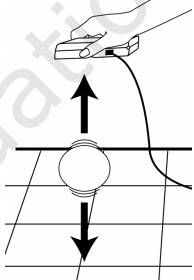From calculating the size of the sun, to discovering the force of gravity on Earth, mathematics is a curious world that allows us to explore the greatest questions ever posed by humans. Today, do we find ourselves looking to solve the next great question? Look no further.
For in this math lesson, we will utilize the power of modern technology to explore the wondrous mysteries of gravity and how its unceasing force can drain the kinetic energy of an elastic object via contact force to ultimately convert all of the kinetic energy to potential form and thereby, halting the motion of the object altogether. Or simply put, we will deal with combining modeling technology with a hands-on activity involving a basketball to model the behavior of a basketball as it bounces when dropped from a given height.
For this activity, students will be separated into groups of 3 or 4. They will each be given one basketball and one Vernier software package (which includes the motion trackers and calculators) to work with. Using the graphing software, students will create a model that depicts the behavior of a basketball when dropped from a given height. Using their graphs, they will then analyze it mathematically using their knowledge of quadratic functions. This activity requires students to have demonstrated mastery of quadratic functions.

Common Core State Standards:
For a function that models a relationship between two quantities, interpret key features of graphs and tables in terms of the quantities, and sketch graphs showing key features given a verbal description of the relationship. Key features include: intercepts; intervals where the function is increasing, decreasing, positive, or negative; relative maximums and minimums; symmetries; end behavior; and periodicity.*
Graph functions expressed symbolically and show key features of the graph, by hand in simple cases and using technology for more complicated cases.*
Graph linear and quadratic functions and show intercepts, maxima, and minima.
This math activity requires physical and mental teamwork for adequate completion. Furthermore, this activity is designed to acknowledge students from all learning styles (visual, auditory, kinesthetic) in addition to creating an abundance of student discourse. The engaging nature of this activity makes it effective as it puts into physicality what students already have worked with and know about quadratic functions. To see the details of the activity, follow the link.
